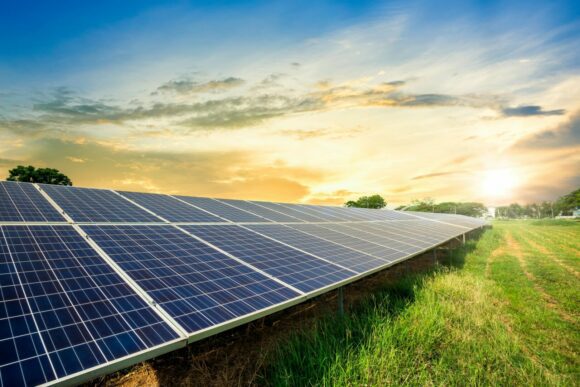Amazon to Flip the Switch on Massive Wind Project in North Carolina
Wind generates about 5 percent of U.S. electricity, but that figure is steadily rising. In fact, at 41 percent, wind power was the largest source of new electricity production in 2015. None of that, however, came out of the Southeast. The region imports 3.8 gigawatts of wind energy from the Midwest (enough to power 10 million homes for as little as 1.8 cents per kilowatt-hour), but wind farms themselves, similar to solar, have almost no penetration here.
“Wind is so new in the Southeast; I think there has been a fear of the unknown,” said Katharine Kollins, president of Southeastern Wind Coalition. “Having the Avangrid project up and running will be important for people to see wind farms firsthand and up close.”
Except for the occasional hurricane, the South isn’t known to be particularly windy—at least not compared with Plains states like Iowa, where the wind accounts for nearly a third of total electricity generation. But great potential exists in this void and with new turbine technology, some southern states are getting ready to tap into it.
“The biggest change in the industry has been turbine advancements,” said Simon Mahan, director of the Southern Wind Energy Association, an industry organization. Taller turbines, like those at Avangrid’s Amazon Wind Farm, can reach higher, stronger winds, and longer blades are able to harness gentler breezes. “This is opening the South as the next frontier for wind energy,” Mahan noted.
Indeed, wind turbines have gone through a growth spurt. Since the 1990s, hub height has risen from 45 to 300 feet, which is as tall as the Statue of Liberty. And blades now extend more than 180 feet in length.
In addition to technology, improvements in energy policy, such as renewable energy standards and the federal Production Tax Credit, have enabled wind’s price tag to plummet 90 percent over the past 25 years, making it more alluring in the competitive energy market.
According to a 2015 report by the U.S. Department of Energy, the Southeast could become the Most Improved Player in coming years, particularly as the national energy mix continues to change. “If I’m thinking realistic numbers, the Southeast could easily support a few gigawatts of wind,” Kollins said.
Related Posts

Weil Article: Transfers of Advanced Manufacturing Production Credits: Perspectives on a Busy Fourth Quarter
Feb 3, 2025
By Bryan Didier, Steven Lorch, Irina Tsveklova and Jonathan Macke Last year—particularly the fourth quarter—saw a significant uptick in transfers of advanced manufacturing production credits (AMPCs) described under Section 45X. […]

Thomas Barnes Joins Monarch Private Capital’s #BestInClass Renewable Energy Team
Apr 24, 2025
Seasoned legal and transaction management professional brings deep experience in renewable energy investments to support Monarch’s growing clean energy portfolio. ATLANTA (GLOBE NEWSWIRE) – Monarch Private Capital (Monarch), a nationally […]

Monarch Private Capital Secures Agreement with North Carolina Department of Revenue Honoring All NC Renewable Energy Tax Credits Reported by Monarch’s Investors
Mar 19, 2024
Monarch Private Capital, a leading impact investment firm renowned for its development, financing, and management of a diversified portfolio of projects generating federal and state tax credits, announced today that […]